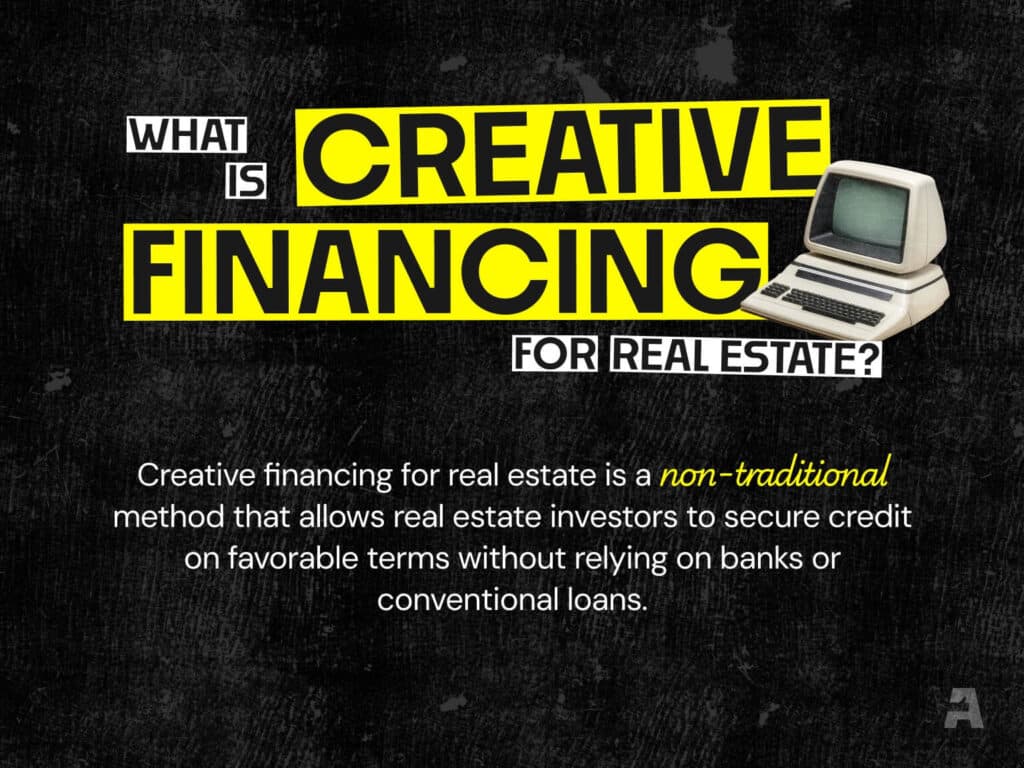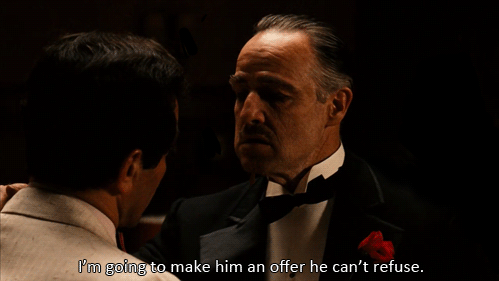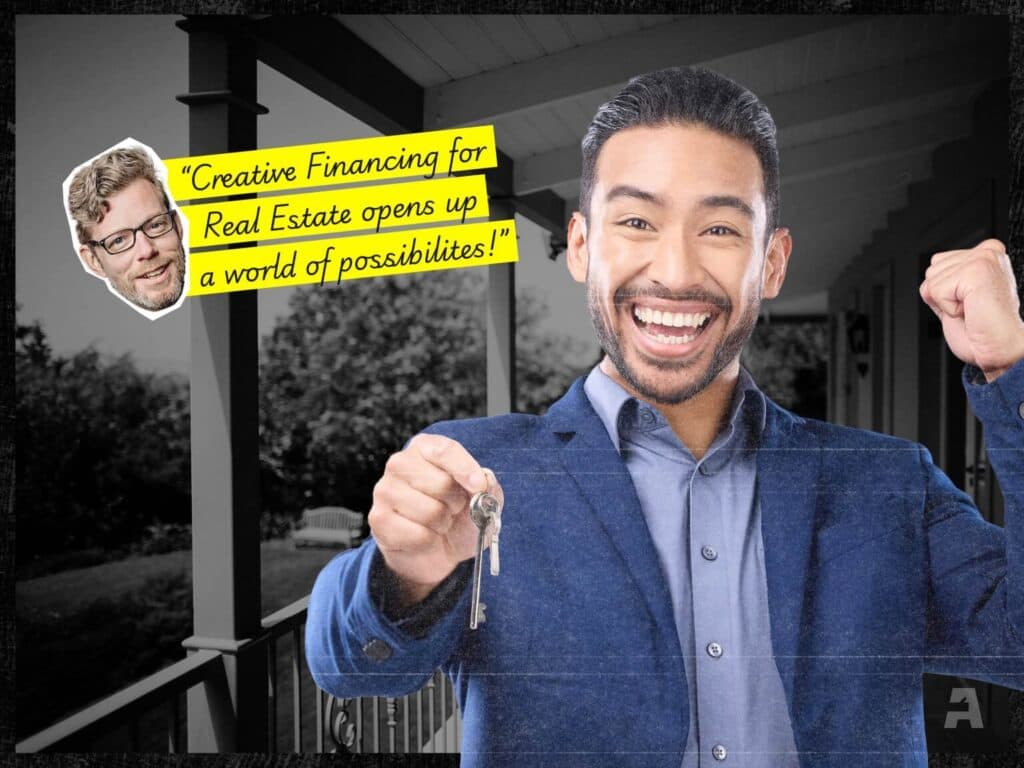You might be creative… you’re an artist or singer or dancer or creative writer.
But creative financing? 🤔 What the heck does that mean in the realm of real estate investing?!
Well, creative financing for real estate provides flexibility, accessibility, and a range of other benefits for real estate investors.
Sounds pretty good, right?
So, let’s talk about it!
The real estate industry is a vibrant and multi-faceted industry… and real estate investing is one of the most significant pieces of that puzzle.
But for a large number of real estate investors, the more traditional ways of financing real estate often don’t make sense. I’m referring to the same methods a homeowner would look into, like getting a loan from the bank.
See, when an investor chooses the right creative financing method, it can drastically increase the ROI of the property. Hooray!

So, let’s take a look at the creative, unconventional ways of financing properties and uncover strategies that savvy investors employ to optimize their portfolios and maximize returns.
What Is Traditional Financing for Real Estate?
Traditional financing typically involves banks or credit unions and is the prevalent method for Mr. and Mrs. Homebuyer to purchase a house.
This includes common elements like mortgages, down payments, interest rates, closing costs, and insurance & taxes.
What Is Creative Financing Real Estate?

Creative financing for real estate is a non-traditional method that allows real estate investors to secure credit on favorable terms without relying on banks or conventional loans. (3 cheers!) 🥂
Both parties — the investor and the lender — can benefit financially from this somewhat unconventional arrangement.
Now, as a real estate investor, you may very well be looking for alternative ways to fund your deals at some point.
So, you should definitely look into these creative financing options and at least have a base-level understanding of them sooner rather than later.
10 Creative Financing Hacks for Real Estate Investors
#1. Seller Financing
With this creative financing method, the seller acts as the bank, and the buyer makes payments to the seller at an agreed interest rate and monthly payment amount.
That’s right. No bank qualifying and even no money down if that’s how you wanna roll. ッ
This one’s a great way to avoid using traditional banks.
#2. Self-Directed IRA
A self-directed IRA offers diverse investment options, like stocks and mutual funds. But you can also use this approach to invest in property, offering security from the volatile stock market and tax benefits.
There are definitely pros and cons to this creative financing approach that you should understand, but they require a deep-dive article to even begin to understand. But at a high level, the benefits of self-directed IRAs for real estate include:
- Potential for you to get better returns than traditional investment vehicles.
- Safeguard your retirement savings from high economic volatility.
- Enjoy tax-free or tax-deferred growth as long as you meet certain conditions.
- Build your retirement nest through the acquisition of rental properties.
#3. Lease Option
A lease option, often called “rent-to-own,” combines a rental agreement with an option to buy at a set price. At the term’s end, the tenant-buyer can either purchase the property or opt out, losing any option fee and rent premiums paid.
Our awesome friend, Joe McCall, who you may know from the Z-Code program — this is his specialty: using lease options as a creative financing strategy and even wholesaling lease options!
#4. Private Money
In creative financing for real estate, “private money” means loans from individual entities, not banks. And they usually have longer terms than other methods, including Hard Money.
You’d pitch your deal to a private lender with specific terms about interest and repayment timing. Just know that interest rates depend entirely on what you negotiate with the lender and what they ask for.

Sometimes, private lenders can require extraordinarily high interest for their private money loans, as high as 15%-20%, but often, they can be negotiated quite low and reasonable in comparison to hard money. I’ve seen private money for as low as 5%.
#5. Hard Money
This creative financing method offers easier access to funds. The short-term funds, though, also have high-interest rates, usually 8%-15%.
A hard money loan uses the “hard” asset of the actual real estate, while a private money loan analyzes both the property and the borrower’s financial strength.
#6. Crowdfunding/Syndication
If you want to raise a large amount of money, you can pool the funds and access capital from online platforms to finance your investments.
#7. Cross Collateral
In creative financing for real estate, cross-collateral allows the use of equity in one asset to secure a loan for another property.
Here’s an example?
If a real estate investor, John, owns a debt-free $5 million property but needs a loan for a risky $800,000 project, he might offer his existing property as collateral to the bank.
#8. Personal Loan
While the high-interest rates aren’t awesome on this creative financing option, it could still be an option for property upgrades or quick wholesale deals.
#9. Home Equity Line Of Credit
I once saw someone say that home equity is like a credit card against your home’s value.
That means if your home’s value exceeds your mortgage, you can use the difference as collateral. If your home is worth $300,000 and you owe $200,000, you have $100,000 in equity. (Nice work!)
A HELOC lets you borrow against that equity instead of getting a lump sum like traditional home equity loans.
Little known fact: most people think of only using a HELOC in the second position after your primary mortgage, which is traditionally financed for 15 or 30 years.
But, you can actually refinance your traditional mortgage that’s in the first position and replace it with a home equity line of credit, also in the first position. Doing so can be a very effective way to accelerate your payoff on any investment property.
It’s outside the scope of this article, but it’s a really exciting, high-value “hack” that very few people in our industry are aware of. 😉

#10. Cash-Out Refinance
This option for creative real estate financing lets you secure a new loan exceeding your current mortgage, turning home equity into cash without selling.
Benefits include lower interest rates and debt consolidation.
Can I Buy a House with No Money Down?
Actually… yes!
You can do creative deals using financing hacks like seller financing or lease options. These allow you to control the property without bringing money to the table as long as you and the seller can agree on a win-win solution.
You see, knowing these real estate financing hacks enables you to be a creative deal-making ninja. 🥷
Final Thoughts on Creative Financing Hacks for Real Estate Investors

Creative financing for real estate opens up a world of options for investors.
Now, with the list we served up, I highly encourage you to do a deep dive into each option, learn the pros, cons, and limitations, and then go with the best method(s) for your real estate investing business.
You might find that more than one creative financing method works based on the different types of deals you find.
Get to it!
